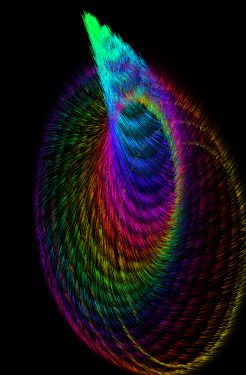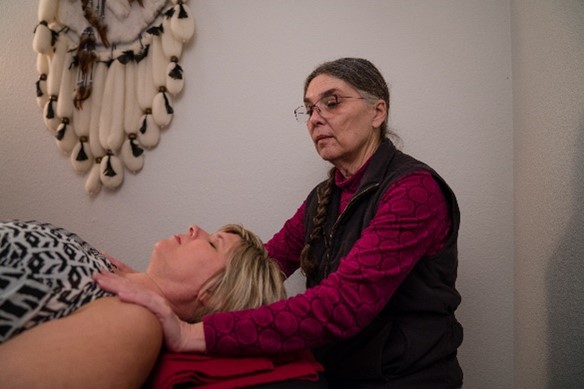
What to do with Emotional Pain
Emotional Pain Reiki Symbols, Hand Positions and Thoughts
The Original Reiki Handbook of Dr. Usui
By William Lee Rand
~Evetta Rose~ Transform Everyday
Pages 9
It is responsibility to decide how you are going to move forward and away from your past. After all, what happened is in the past. You can start by making small changes in your everyday life. Every change is your conscious effort to move forward in life and to take charge of your future.
~Vianna Stibal~ Theta Healing Disease and Disorder
Pages 83
Releasing sorrow and anger from all levels through a tone from the heart. One of the most divine attributes that we posses as humans is the spoken word.
Each organ has its own song that it sings, and we can release negative influences from each organ by singing the sad song using our voice.
~Melody Allen~ Reiki Master/Teacher
Our voice is heard from the practice of Reiki….
The Reiki Symbol I would start with
- Center yourself with the White Light. Aligning the room and table/chair with “Johre” White light; then Align yourself. Bringing your Reiki Fire up from the Banked position.
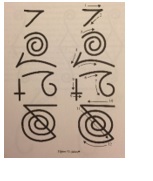
- Step into the Auric field, becoming one with the being you are working on. If you are working on yourself step inside of yourself. Bringing these symbols to start with:

- As you start working at the Head or Feet first; face up or down first; or in the chair, you will bring other symbols of Reiki into this Place, this being. In this situation I would bring these symbols into this scenario… this is an example. Remembering to bring something for the “Pain” of an Emotions as well. From the Past, Present and Future giving permission to remove and replace with a new message. The Power of Song/Voice speaks into existence of life, into the being’s DNA. Reiki does work at the level of creation; Song/Voice/Vibration of Life.
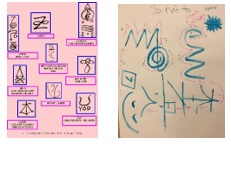
- I would start with these hand positions on the front and back of the being.
1. Throat 2. Chest 3. Kidneys 4. Stomach 5. Intestines 6. Bladder 7. Head 8. Feet top and bottom 9. Auric Field 10. The beings Tree of Life 11. Akashic Records.
- After I have done the Traditional Hand position and Knowledge Hand position, I would continue with the Body Talk and see/feel what else was needed.
- The next step I would step into Hon-Sha-Ze-Sho-Nen, with this symbol I would begin to work though time. Meaning 1-minute equals 1 hour or 1-minute equals 1 day. You would set the time that Reiki would continue to work, when you are not present.
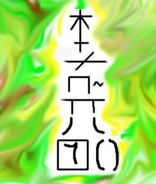
- Next it is your time to close you scared circle and cleanse the area. Also, it is time you clean yourself. “Johre” White Light and any Reiki Symbols that you see or feel for the cleansing. This is an example of symbols to use.
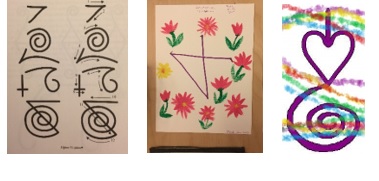
- Thank Reiki for the Unconditional Love and Help. Thank yourself for your work and Unconditional Love for yourself and the being that you worked on.
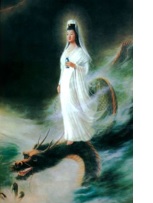
HEALING GUIDE
Hayashi Reiki Institute
(This printed copy is a substitute for the original hand written text.)
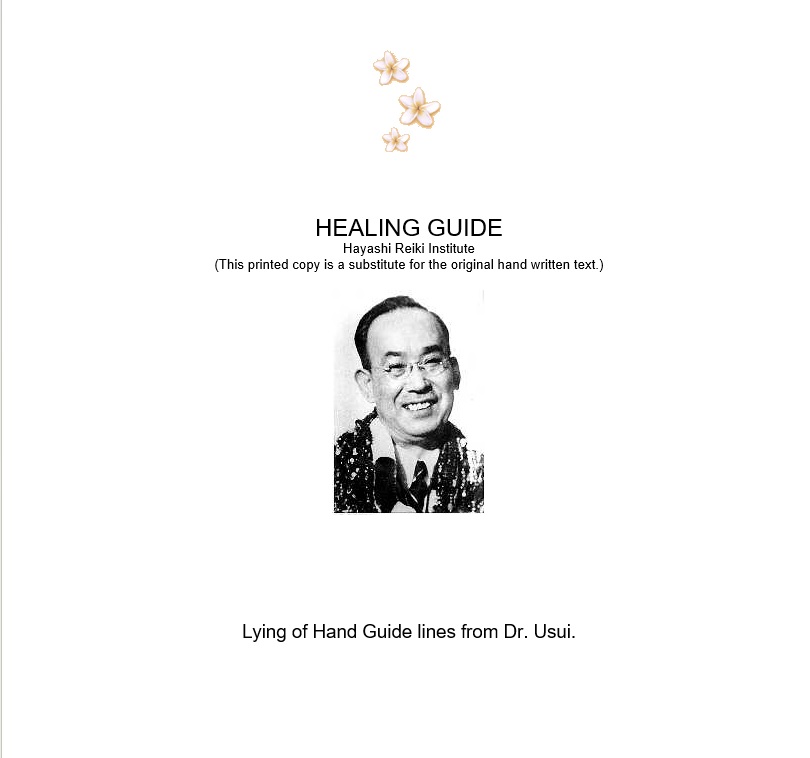
Lying of Hand Guide lines from Dr. Usui.
CHAPTER 1 – HEAD
1. HEAD; Brain Diseases, Headache
1. front of jaw 2. temples 3. back of the head and back of the neck 4. top of the head
(note) With any disease you can include head treatment as a part of the disease treatment. In the case of headache, you should treat very thoroughly the place on the head that is aching.
2. EYES; All kinds of eye diseases, conjunctivitis, trachoma, leucoma, nearsightedness, trichiasis, ptosis, cataract, glaucoma, etc.
1. eye balls, 2. inside corners of eyes, 3. outside corners of eyes, 4. back of the head
(note) Even though one eye has a problem, you treat both eyes. You also treat the kidneys, liver, wombs, and ovaries.
3. EARS; All kinds of ear diseases, tympanitis, external otitis, ringing ear, hard of hearing, etc.
1, auditory canal 2. depression just below the ears 3. high bone behind the ears 4. back of the head
(note) Even though one ear has a problem you treat both ears. In the case of diseases which follow colds, such as tympanitis and parotitis, you must treat bronchi, and hilar lymph. Also pay attention to the kidneys, womb, and ovaries.
4. TEETH
1. In the case of a toothache, treat from the outside at the root of the tooth.
5. ORAL CAVITY
1. Shut the mouth, and then treat the lips by holding the palms on them.
(note) cf. Diseases of Digestive Organs
6. TONGUE
1. Press on or pinch the diseased part of the tongue. 2. Treat the root of the tongue from outside the mouth.
(note) If you find this technique difficult, then press both arches of the feet forward.
CHAPTER 2 – DISEASES OF DIGESTIVE ORGANS
1. STOMATITIS
1. mouth 2. esophagus 3. stomach 4. intestines 5. Liver
2. THRUSH
1. mouth 2. tongue 3. esophagus 4. stomach 4. intestines 6. liver 7. heart 8. kidneys
(note) To heal the tongue, treat the arches of the feet.
3. SALIVA
1. mouth 2. root of the tongue 3. stomach 4. intestines 5. Head
4. ESOPHAGUS DISEASES; stricture of the esophagus, dilation of the esophagus, esophagitis
1. esophagus 2. cardia (solar plexus) 3. stomach 4. intestines 5. liver 6. pancreas 7. kidneys 8. blood exchange
(note) In the case of esophagus cancer, the prognosis is most likely not very good.
5. STOMACH DISEASES; acute and chronic gastritis, gastric atony, gastric dilation, gastric ulcer, stomach cancer, gastroptosis, neurologic stomach ache, neurologic dyspepsia, gastrospasm
1. stomach 2. liver, 3. pancreas 4. intestines 5. kidneys 6. spinal cord 7. blood exchange
(note) If the condition of the cancer is obvious, the prognosis is most likely not very good.
6. INTESTINE DISEASES; intestinal catarrh, constipation, appendicitis, vermiform process, ileus, invagination, intestinal volvulus, intestinal bleeding, diarrhea
1. stomach 2. intestines 3. liver 4. pancreas 5. kidneys 6. heart 7. blood exchange 8. lumbar vertebrae 9. sacrum
7. LIVER DISEASES; liver congestion, hyperemia, abscess, sclerosis, hypertrophy, atrophy, jaundice, gallstone, etc.
1. liver 2. pancreas 3. stomach 4. intestines 5. heart 6. kidneys 7. blood exchange
(note) A few days after the treatment, gallstones will break into pieces by themselves and will be eliminated from the body. In the case of liver cancer, prognosis is most likely not very good.
8. PANCREAS DISEASES; liver cyst, ptosis, hypertrophy, etc.
1. pancreas 2. liver 3. stomach 4. intestines 5. heart 6. kidneys 7. blood exchange
(note) In the case of pancreas cancer, prognosis is most likely not very good.
9. PERITONEUM DISEASES
1.liver 2. pancreas 3. stomach 4. intestines 5. peritoneum area 6. Bladder 7. heart 8. Kidneys 9. blood exchange
(note) In the case of tuberculous diseases, treat the lung area.
10. ANAL DISEASES; hemorrhoid, inflammation of anus area, open sores of anus area, bleeding piles, anal fistula, prolapse of the anus
1. the affected part of anus 2. coccyges 3. stomach 4. intestines
(note) In the case of anal fistula, do the same treatment as intestinal and pulmonary tuberculosis.
CHAPTER 3 – RESPIRATORY DISEASES
1. NASAL DISEASES; acute and chronic nasal catarrh, hypertrophic and atrophic nasal catarrh
1. nose 2. throat 3. bronchi
2. MAXILLARY EMPYEMA
1. nose 2. depression of upper and front jaw 3. chest 4. throat 5. kidneys 6. stomach 7. intestines 8. blood exchange
3. NOSEBLEED (epistaxis)
1. nasal bones 2. back of the head
(note) If menstruation is late and nosebleed occurs, treat the wombs and ovaries.
4. SORE THROAT AND TONSILLITIS
1. throat 2. tonsil 3. bronchi 4. kidneys 5. lungs 6. stomach 7. intestines 8. head
(note) In the case of tonsillitis, treat the kidneys well.
5. TRACHEITIS AND BRONCHITIS
1. tracheas and bronchi 2. lungs 3. stomach 4. intestines 5. heart 6. Kidneys 7. head
6. PNEUMONIA; CATARRHALCROUPOUS
1. lungs 2. bronchi 3. heart 4. liver 5. pancreas 6. stomach 7. Intestines 8. kidneys 9. blood exchange
7. ASTHMA; chronic and acute asthma
1. bronchi 2. lungs 3. liver 4. pancreas 5. diaphragm 6. stomach 7. intestines 8. kidneys 9. head 10. nose 11. heart
(note) In the case of an acute attack, you may let your patient sit up and treat them in this position.
8. LUNG DISEASES; pulmonary edema, abscess, pulmonary tuberculosis, emphysema of lungs
1. lung area 2. heart 3. liver 4. pancreas 5. stomach 6. intestines 7. bladder 8. kidneys 9. spinal cord 10. head
(note) In the case of women regardless of their age, always treat the wombs and the ovaries. Doing blood exchange is effective, but do not do it with very weak and very sick patients.
9. PLEURA DISEASES; both dry and moist
1. chest area in general 2. heart 3. liver 4. pancreas 5. stomach 6. intestines 7. kidneys 8. blood exchange
CHAPTER 4 – CARDIOVASCULAR DISEASES
1. HEART DISEASES; endocarditis, heart valve diseases, various symptoms of pericardium, various symptoms of the heart itself, palpitation, angina pectoris, etc.
1. heart 2. liver 3. stomach 4. intestines 5. pancreas 6. kidneys 7. spinal cord 8. blood exchange
2. ARTERIOSCLEROSIS; aneurysm, cardiac asthma, etc.
1. same as treating heart problems 2. bronchi and chest area
CHAPTER 5 – URINARY ORGAN DISEASES
1. KIDNEY DISEASES; kidney congestion, anemia, atrophy, sclerosis, hypertrophy, abscess, wandering kidney, pyelitis, kidney stone, uremia, filariasis
1. kidneys 2. liver 3. pancreas 4. heart 5. stomach 6. intestines 7. bladder 8. head 9. blood exchange
2. CYSTITIS; urinary retention, uremia, urgency, pain when urinating
1.kidneys 2. bladder 3. urethra 4. prostate gland 5. wombs 6. same as treating kidney diseases
3. ENUVESIS
1. bladder 2. intestines 3. stomach 4. kidneys 5. spinal cord 6. head 7. blood exchange.
CHAPTER 6 – NEUROLOGICAL DISEASES
1. CEREBRAL ANEMIA, CEREBRAL HYMEREMIA
1. head 2. heart
2. HYSTERIA
1. wombs 2. ovaries 3. stomach 4. intestines 5. liver 6. kidneys 7. head 8. eyes 9. blood exchange
3. NERVOUS BREAKDOWN, INSOMNIA
1. stomach 2. intestines 3. liver 4. pancreas 5. kidneys 6. eyes 7. head 8. blood exchange
(note) Be careful with maxillary empyema.
4. MENINGITIS
1.head, mainly back of the head and back of the neck
(note) Mainly treat the head in order to heal the cause of the disease, such as the nose, forehead, and inflammation of the head; also, in order to heal remote organs’ diseases, such as gastritis and pneumonia caused by erysipelas. Same for tuberculous one.
5. EPIDEMIC CEREBROSPINAL MENINGITIS
1. spinal cord 2. back of the head and back of the neck 3. heart 4. stomach 5. intestines 6. liver 7. kidneys 8. bladder
(note) Mainly treat the spinal cord, back of the head and back of the neck
6. MYELITIS
1. spinal cord in general 2. stomach 3. intestines 4. liver 5. bladder 6. kidneys 7. head 8. blood exchange
7. CEREBRAL HEMORRHAGE; intracerebral bleeding, cerebral thrombosis, etc.
1. head 2. heart 3. kidneys 4. stomach 5. intestines 6. liver 7. spinal cord 8. paralyzed area
8. POLIO
1. spinal cord 2. stomach 3. intestines 4. kidneys 5. sacrum 6. paralyzed area 7. head 8. blood exchange
9. NEURALGIA; Palsy, Neural spasticity, Migraine
1. affected area 2. liver 3. pancreas 4. stomach 5. intestines 6. kidneys 7. head 8. spinal cord 9. blood exchange
(note) Pay attention to the womb and ovaries.
10. BERIBERI
1. stomach 2. intestines 3. heart 4. liver 5. pancreas 6. kidneys 7. paralyzed or edematous area 8. blood exchange
11. GRAVES’ DISEASES
1. womb 2. ovaries 3. stomach 4. intestines 5. liver 6. pancreas 7. heart 8. thyroid 9. eyes 10. kidneys 11. spinal cord 12. blood exchange
12. EPILEPSY
1. liver 2. pancreas 3. head 4. stomach 5. intestines 6. kidneys 7. spinal cord 8. blood exchange
13. CONVULSION
1. liver 2. stomach 3. intestines 4. kidneys 5. spinal cord 6. shoulders 7. arms 8. elbow joint area 9. wrist 10. head
14. CHOREA
1. liver 2. stomach 3. intestines 4. kidneys 5. spinal cord 6. spastic area at the legs and arms 7. head 8. blood exchange
15. SEA SICK
1. stomach 2. solar plexus 3. head
16. FOOD POISONING
1. stomach 2. solar plexus 3. liver 4. pancreas 5. intestines 6. heart 7. kidneys 8. Head 9. blood exchange.
CHAPTER 7 – INFECTIOUS DISEASES
1. TYPHOID; PARATYPHY
1. liver 2. pancreas (spleen) 3. stomach 4. intestines 5. heart 6. kidneys 7. spinal cord 8. head
2. DYSENTERY; Cholera, children’s dysentery and others
1. stomach 2. intestines 3. liver 4. pancreas 5. kidneys 6. heart 7. head 8. blood exchange
3. MEASLES
1. throat 2. trachea 3. bronchi 4. stomach 5. intestines 6. heart 7. kidneys 8. spinal cord 9. head
4. SCARLET FEVER
1. throat 2. chest 3. kidneys 4. stomach 5. intestines 6. bladder 7. head 8. blood exchange
5. VARICELLA
1. stomach 2. intestines 3. kidneys 4. blood exchange 5. affected area 6. head
6. INFLUENZA
1. nose 2. throat 3. trachea 4. bronchi 5. lungs 6. liver 7. pancreas 8. stomach 9. intestines 10. kidneys 11. head 12. blood exchange
7. WHOOPING COUGH
1. nose 2. throat 3. bronchi 4. apex of the lungs 5. stomach 6. intestines 7. kidneys 8. blood exchange
8. DIPHTHERIA
1. throat 2. trachea 3. nose 4. lungs 5. heart 6. liver 7. stomach 8. intestines9. kidneys 10. blood exchange
9. (título ilegível)
1. liver 2. pancreas 3. spleen 4. intestines 5. bladder 6. kidneys 7. spinal cord 8. head 9. blood exchange
10. MALARIA
1. pancreas (spleen) 2. liver 3. heart 4. stomach 5. intestines 6. kidneys 7. spinal cord 8. blood exchange
11. TETANUS
1. jawbone 2. back of head 3. throat 4. lungs 5. affected area 6. stomach 7. intestines 8. kidneys 9. spinal cord
(note) In the case of puerperal tetanus, treat the womb. In the case of primary child, treat the navel.
12. ARTICULAR OR MUSCULAR RHEUMATISM
1. affected area 2. heart 3. chest 4. liver 5. pancreas 6. stomach 7. intestines 8. kidneys 9. spinal cord 10. head
13. RABIES
1. affected area 2. heart 3. liver 4. kidneys 5. stomach 6. intestines 7. spinal cord 8. throat 9. head 10. blood exchange.
CHAPTER 8 – WHOLE BODY DISEASES
1. ANEMIA, LEUKEMIA, SCORBUTUS
1. heart 2. liver 3. pancreas 4. stomach 5. intestines 6. kidneys 7. spinal cord 8. blood exchange
2. DIABETES
1. liver 2. pancreas 3. heart 4. stomach 5. intestines 6. bladder 7. kidneys 8. head 9. spinal cord 10. blood exchange
3. DERMATOLOGICAL DISEASES
1. stomach 2. intestines 3. liver 4. kidneys 5. affected area 6. blood exchange
4. OBESITY
The same as diabetes.
5. SCROFULA
1. affected area 2. stomach 3. intestines 4. liver 5. heart 6. chest 7. Kidneys 8. spinal cord 9. blood exchange.
CHAPTER 9 – OTHER DISEASES
1. INFANTILE CONVULSION
1. heart 2. head 3. stomach 4. intestines
2. (título ilegível)
1. affected area 2. head 3. intestines
3. WRONG POSITION OF FETUS
1. womb
4. PREGNANCY
If you treat the womb continually, the growth of fetus is healthy.
5. DELIVERY
1. Sacrum 2. lumbar spine
(note) If you treat these areas, after twelve labor pains the baby will be born very easily. If you keep on treating these areas after the birth of the baby, the afterbirth will be easy as well.
6. DEATH OF FETUS
1. If you treat the womb, the dead fetus will naturally come out on the same day or the next day.
7. CESSATION OF MOTHER’S MILK
If you treat around the breast and mammary gland, the mother will soon start having milk.
8. MORNING SICKNESS
1. womb 2. stomach 3. solar plexus 4. intestines 5. kidneys 6. head 7. spinal cord
9. ERYSIPELAS
1. affected area 2. stomach 3. intestines 4. liver 5. heart 6. kidneys 7. spinal cord 8. blood exchange
10. HYPERHIDROSIS
1. kidneys 2. affected area 3. blood exchange
11. BURN
Put one hand one or two inches away from the affected area. When the pain is gone, put the hand on this area.
12. CUT BY A SWORD
Treat as you press the cut with a thumb or a palm to prevent bleeding.
13. UNCONSCIOUSNESS; by falling, an electric shock. etc.
1. *katsu 2. heart 3. head
14. DROWNING
1. Let the patient throw up water 2. *katsu 3. heart 4. Head
15. MENOPAUSE; PERIOD PAINS
1. womb 2. ovaries 3. cranium
16. HICCUP
1. diaphragm 2. liver 3. pancreas 4. kidneys 5. stomach 6. intestines 7. spinal cord 8. head
17. STUTTERING
1. throat 2. head 3. singing practice
Practice Song
1. Mukou no Koike ni “Dojo” ga sanbiki nyoro-nyoro to. (There are three loaches wiggling in the pond over there.)
2. Oya ga Kahyo nara ko ga Kahyo. Ko-Kahyo ni Mago-Kahyo. (The parent is Kahyo, his child is Kahyo. Son, Kahyo and grandson, Kahyo.)
(Note) Those who can sing songs can be healed.
18. PAIN AT THE TIP OF FINGERS
1. affected area
19. VOMITING
1. stomach 2. solar plexus 3. liver 4. spinal cord at the back of stomach 5. head 6. kidneys
20. SPLINTER
1. affected area
(note) When the pain leaves, the splinter comes back. You pull the splinter out at this moment.
21. GONORRHEA
1. urethra 2. Hui-Yin 3. bladder 4. wombs
(note) If it is orchitis, apply your hand lightly on the testicles.
22. SPASM OF PAIN; Stomach Cramps
1. stomach 2. on the back at the stomach 3. liver 4. kidneys 5. intestines 6. head
23. HERNIA
As you touch the affected area lightly, it will contract by itself. Treat stomach and intestines.
Generated on 5/19/2014
